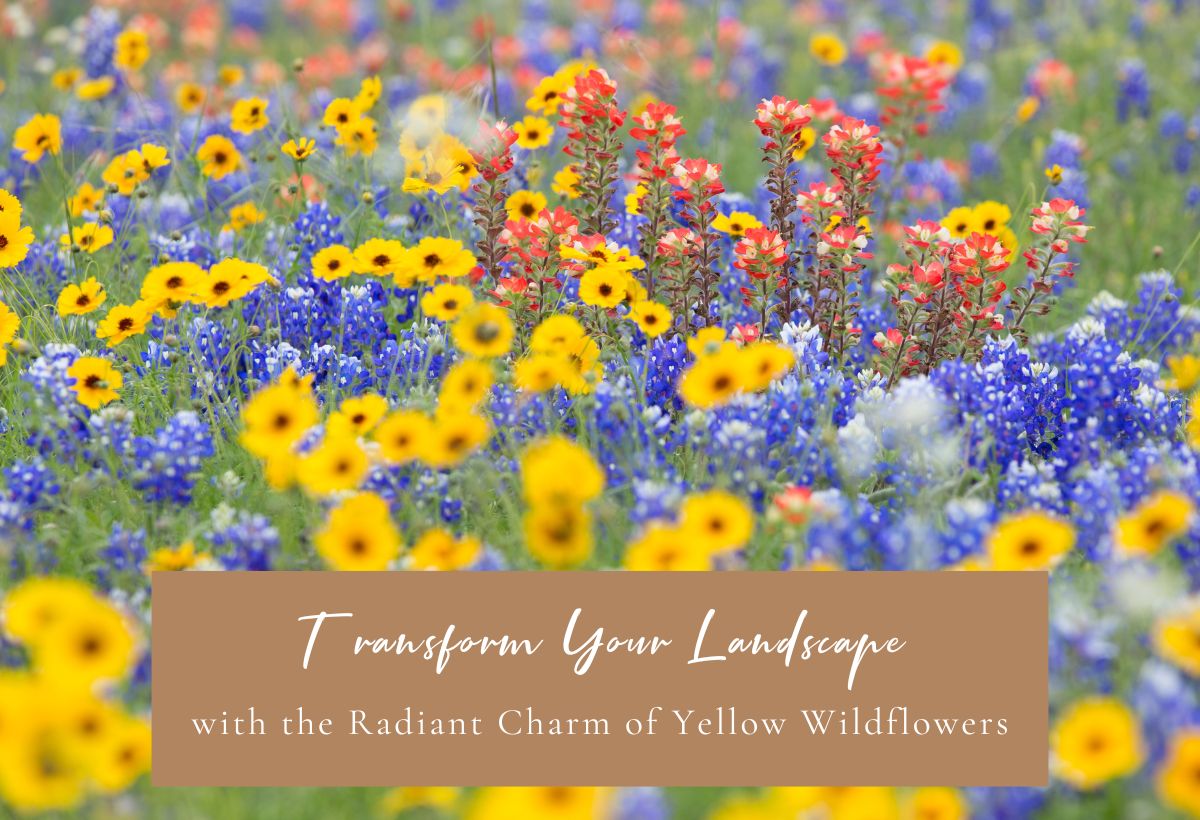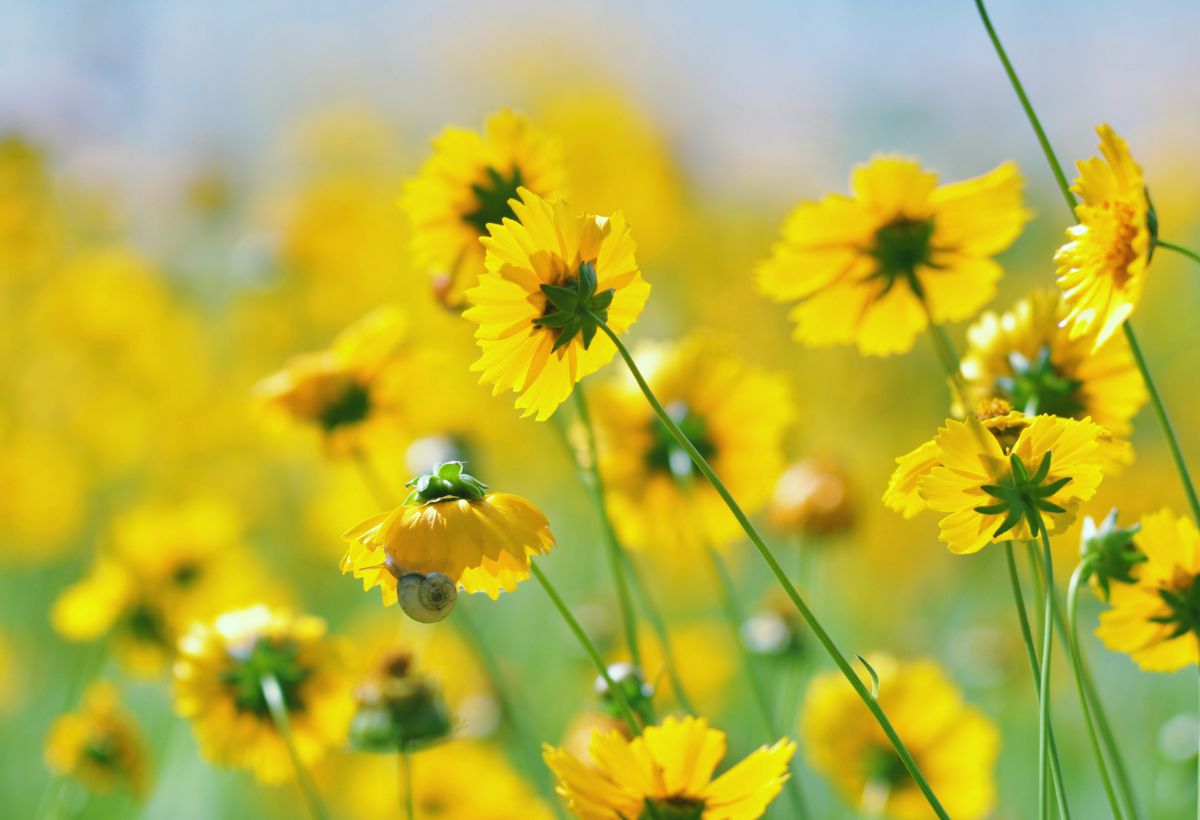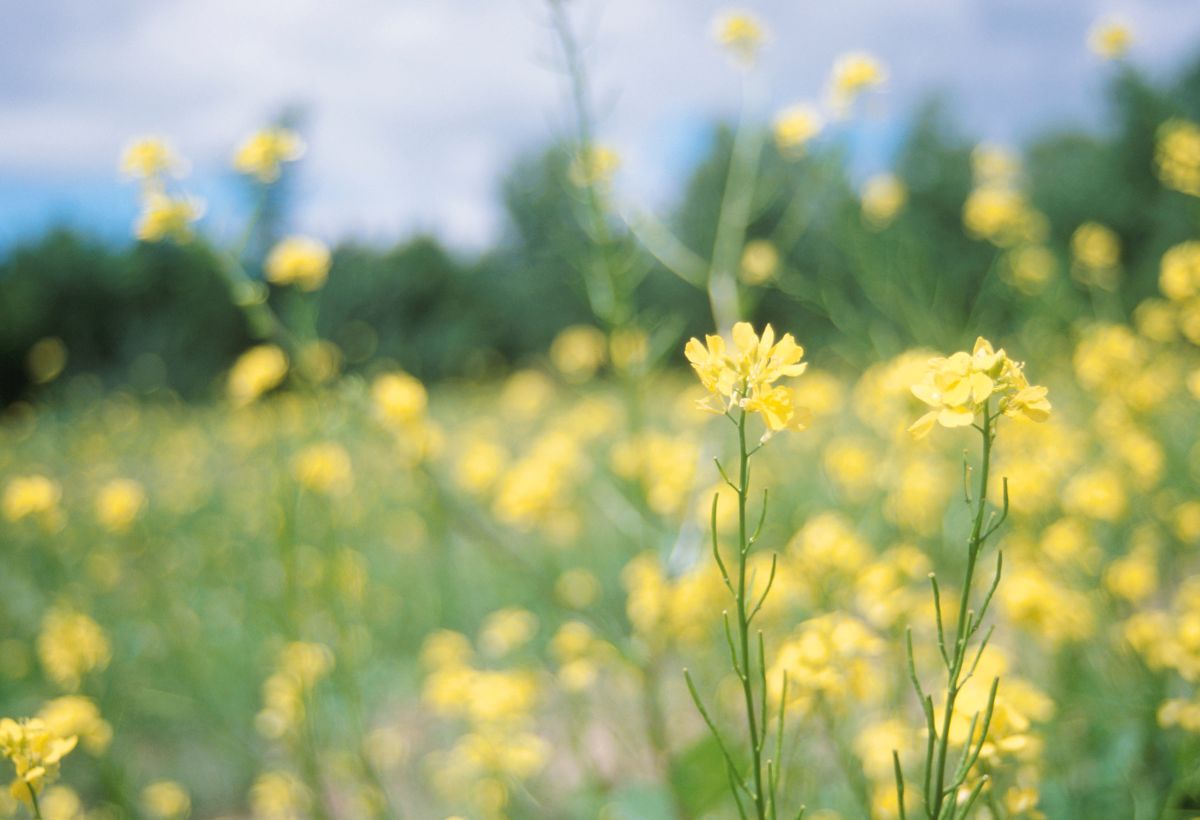
Have you ever wondered how yellow wildflowers can completely redefine the ambiance of your garden? These sun-kissed marvels are not a treat for the eyes; they’re a sanctuary for local wildlife, fostering biodiversity right in your backyard.
We promise that this blog post will be fun as it talks about all the cool ways that yellow wildflowers can improve the ecosystem in your garden. When you leave, you’ll know how to pick, plant, and care for these lovely flowers so that your garden is a sight of beauty and life.

Why Yellow Wildflowers?
You can picture a beautiful scene with a huge ocean of golden flowers. Each petal sparkles in the sun and moves in the breeze. It’s beautiful, so many bees, butterflies, and other important pollinators come to your garden. This makes it a healthy ecosystem. You can’t beat the magic of yellow wildflowers!
These wild wonders stand apart from traditional garden flowers, bringing a touch of untamed beauty and a sense of wild freedom to any landscape. Their resilience and natural charm make them a perfect addition to any outdoor space.
Garden landscaping can be elevated, regardless of whether you have a vast backyard or a small balcony craving a burst of color. Incorporating yellow wildflowers into your outdoor space can turn it into a luminous retreat. These vibrant blooms do more than enhance the visual appeal of your garden; they also uplift your mood, transforming your outdoor space into a haven of happiness and tranquility.
How to Incorporate Yellow Wildflowers into Your Landscape
Now that you’re sold on the idea of yellow wildflowers, let’s talk about how to incorporate them into your landscape. The possibilities are endless, but here are a few ideas to get you started:
Create a Wildflower Meadow
Turn a patch of unused lawn into a vibrant wildflower meadow. Scatter seeds of yellow wildflowers like Rudbeckia hirta, coreopsis, and goldenrod, and watch as your meadow comes to life with color and biodiversity.
Plant a Border or Edging
Yellow wildflowers will make the edges of your paths or garden beds look better. Pick types that don’t grow too tall, like creeping Jenny, which has bright green leaves and yellow flowers, or a basket of gold, which is known for having lots of golden flowers grouped.
If you use these choices, you can make a border that is both soft and bright. This will give your garden design more texture and visual interest. With this method, it gets brighter and more interesting. It also gives your garden more color and variety, which makes it a friendlier and more interesting place.
Fill Pots and Containers
Not enough space for a normal garden? Don’t worry at all! A patio or balcony will look more colorful if you put pretty yellow wildflowers in plant pots and other items. Pick several different styles to make a lively and interesting show.
This will not only make your yard look better, but it will also bring in bees and other good bugs. Putting plants in pots of different sizes and shapes will make your garden more interesting and the talk of the town.
Tips for Success
There are some important things you should know before you go out and buy plants or seeds for your yellow wildflower garden. This will help it not only survive but also grow well. Let’s talk about what you need to know to keep your garden healthy.
Choose the Right Location
To flower, most yellow wildflowers need full sun, which means they need to be in direct sunlight for most of the day. You should put these plants where they will get a lot of sunlight when you plan your garden or planting area. This will help them grow well and show off their full beauty.
Prepare the Soil
Soil preparation, which means adding compost or other organic matter to the soil, is an important step that you must take before you start gardening. This important step should not be skipped because it improves the soil’s ability to drain and makes it more fertile.
By adding organic matter to the soil, you make it rich and full of nutrients, which is great for plant growth. Doing these things ahead of time sets the stage for a successful garden and gives your plants the best chance to grow strong and healthy.
Water Wisely
While established wildflowers have the remarkable ability to survive in drought conditions, showcasing their resilience and requiring minimal maintenance, it is of paramount importance to ensure that planted wildflowers receive consistent and regular watering. This extra nurturing is pivotal during the initial stages of their growth. Until these young plants have established their roots within the soil’s embrace, they depend on this external supply of water.
This phase is critical because it’s during this time that they stretch out in search of the moisture and nutrients buried deep below the surface. Once their roots have delved deep enough to tap into these vital resources, the wildflowers can sustain themselves more. This ability to access moisture and nutrients is what empowers them to thrive and exhibit their full splendor through vibrant blooms and lush growth.
Mulch and Weed
Put a layer of mulch around your plants to keep your garden healthy and full of life. This not only helps keep the soil moist, so you don’t have to water as often, but it also stops weeds from growing, so your garden stays neat.
But it’s very important not to put mulch on plant stems or tree trunks. By leaving a small gap, you keep water from building up at the base, which can cause rotting and other diseases. This keeps your plants strong and healthy.

The Lasting Impact of Yellow Wildflowers on Your Garden and Beyond
In conclusion, yellow wildflowers offer a unique and vibrant way to enhance the beauty and biodiversity of your garden. These radiant blooms not only add a splash of sunshine to your outdoor space but also support local ecosystems by attracting pollinators.
By incorporating yellow wildflowers into your landscape, you’re not only creating a stunning garden but also contributing to the preservation of local flora and fauna. Embark on this gardening adventure, and let the world of yellow wildflowers transform your garden into a haven of beauty and life.
Keep browsing our website for more helpful articles!
Comments are closed.